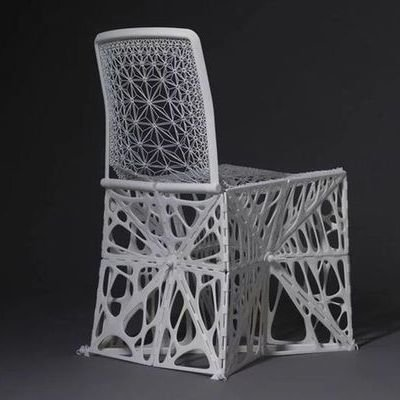
A Quick Guide to Generative Design.
So What is Generative Design?
Generative design is a design process usually using AI to create products faster, by iterating thought thousands of designs a finding the best outcome. Generative design is usually a GAN (Generative Adversarial Network) but other algorthirms include cellular automata, shape grammar, genetic algorthirm and space syntax. In short form a GAN is two adversarial neural networks that compete against each other forcing both networks to get better at their jobs but if you want to read more they is a article Here. Generative design is kinda like evolution it goes through a bunch of random changes keeping the good ones and losing the bad ones.
Why is Generative Design Useful?
Generative design is so useful because it can fail quickly and make small improvements to the product, trying new and unique methods in minutes that human designers won’t think of. Generative design can reduce the number of parts needed and use a minimal amount of materials. Generative design also has less bias than regular designers and will give you multiple options from all points of view. On top of all of that, generative design is cheaper and doesn’t use “gut feeling”. Generative design doesn’t care about your feeling just what works.
But What About the Jobs?
So that is great but don’t we want to keep people employed? Yes, we do. Generative design will get rid of designers’ jobs however, generative design will also create jobs such as:
- Generative design operators
- Programming jobs
- Generative design engineers
Disadvantages of generative design
Generative design isn’t perfect though. Generative design needs input, leaving room for human error. If the inputs are too strict the system doesn’t have enough room to innovate. If the inputs are too loose you might get something different than you were looking for. Aswell, generative design simply just aren’t perfect yet. The biggest flaw in generative design is human error. If a product let’s say a bike is designed to hold 150-pounds and the parameters are set to use the least materials possible, a 155-pound person will break it due to human error.
Current Uses
If you don’t believe me, here are some examples of companies that have used genrative design.
Airbus has used generative design to reduce weight by 45% on the inside partition on its A320 aircraft.
Volkswagon used generative design to reduce weight on rims by 18%.
They are many more examples like this where generative design has improved design on products like:
Generative design is the future of design and products people use day to day would be so much better if generative design algorithms designed them.
Key takeaways
- Generative design is cheaper, better, faster and it’s only big flaw is human error
- Generative design can revolutionize the design industry and can improve every product
- Generative design is usually a GAN algorithm
- Generative design is already in use today
